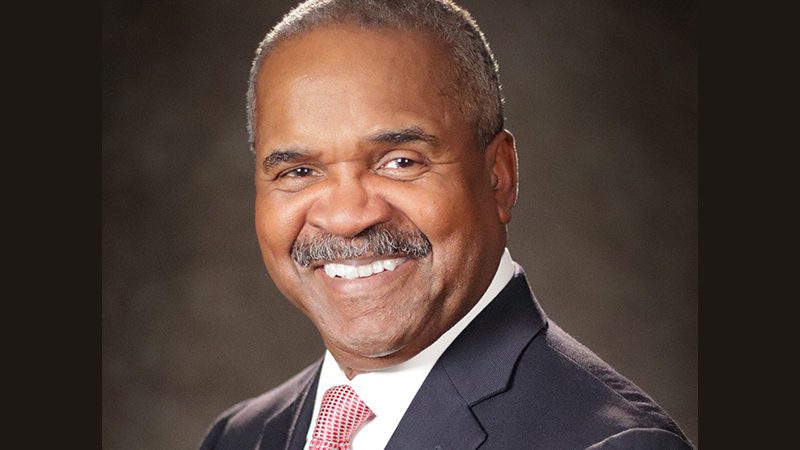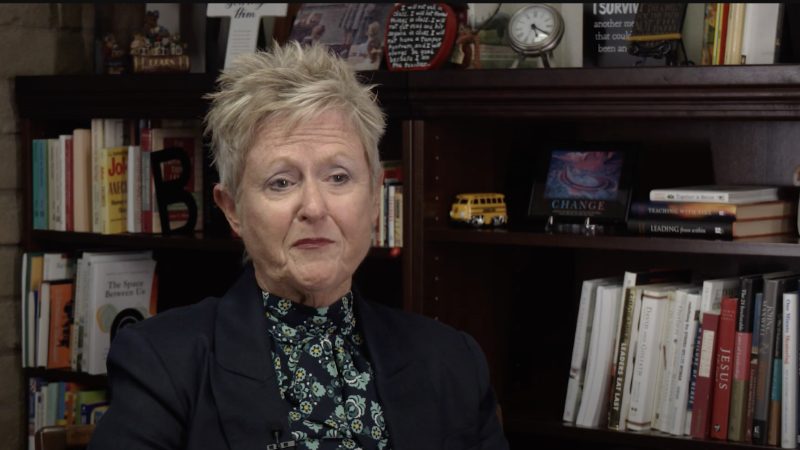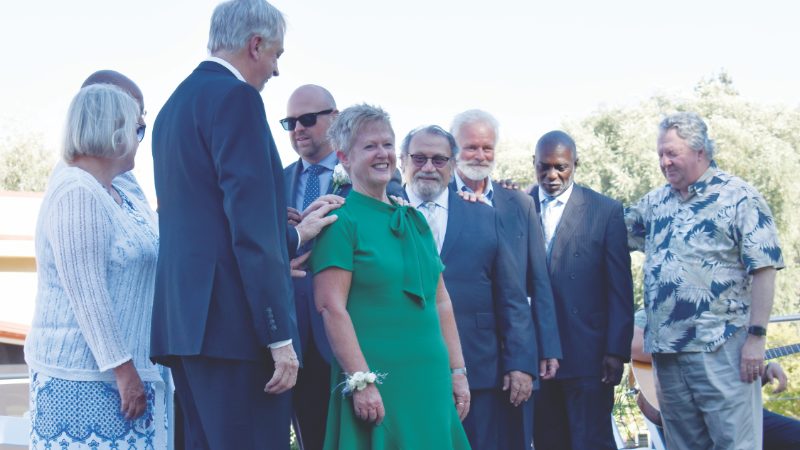Editor’s Note: Part 1 appeared in the September 2022 issue of the Recorder.
Ellen White and the Radical Love of Jesus
We have to be bold and defiant in our process, in our protest. As women in ministry, we reject the negative press and we choose to love in spite of all that’s said and in spite of all the discrimination,” said Dr. Brenda Billingy, who served as the senior pastor of several local churches in the early 2000s before supporting the recruitment and retention of Adventist women clergy in her capacity as Associate Director of the North American Division (NAD) Ministerial Department from 2015-2020.i
“Even though the dark [times] come, we must have courage…. Ministry for women is very different as it is for men. We seem to be challenged on every front—from the pews, from the people who are looking on from the outside, even from your leaders who you would expect would be pushing you forward, but that doesn’t always happen.”
Indeed, Black women clergy face challenges stemming from who their congregation is and whether women’s calling as religious leaders is recognized and accepted.ii The degree to which their local church members are aware of early Adventist views on racial and gender equity also affects the level of support they receive. Sadly, many Adventists today are not aware of what made the Millerites and early Adventist leaders unique as Protestant Christians; it was not just their eschatology or soteriology. Early Adventists, and Ellen White in particular, were decidedly abolitionist.iii
In fact, it was because of their beliefs about the Second Coming and salvation that early white Adventists held these views.iv “It was never God’s purpose that society should be separated into classes, that there should be an alienation between rich and poor, the high and low, the learned and the unlearned,” wrote Ellen G. White.v
Church historians have shown that early 19th-century Adventist pioneers participated in the abolition movement, directly and indirectly, including John Byington, who refused to return runaway slaves and who later became the first president of the General Conference; and John Preston Kellogg (father of Dr. John Harvey Kellogg), a prominent Adventist health reformer who constructed an underground railroad station on his family farm.vi
This was an extremely turbulent period of race relations in the United States, when more than 2,000 lynchings took place, as well as a half-dozen major race riots and the establishment of the notorious Jim Crow legal system of racial segregation that was upheld in the 1896 U.S. Supreme Court Plessy v. Ferguson decision.vii
Church growth continued undaunted. Reports of African-American converts to Adventism began in 1875. By the 1890s, Black Adventists numbered approximately 50 people and doubled to 100 by the year 1900.viii As of 1918, at the end of the First World War, the number had swelled to 3,500.ix
Black Adventist women were active throughout this era of exponential change, as evidenced in the life of abolitionist and women’s rights activist Sojourner Truth, who eyewitnesses say was baptized into the Adventist church by Uriah Smith before her death in 1883. The activist and writer Rosetta Douglass, daughter of the famed abolitionist and statesman Fredrick Douglass, was also Seventh-day Adventist. (Biographical Sketches of Adventist Women Civil Rights Pioneers)
Historian Doug Morgan has noted that the rise of Black Adventists can be attributed to their theology. “For black converts, the race-transcending and race-affirming implications of a pure gospel were crucial,” particularly given Adventism’s claim to have “disentangled pure apostolic teaching and practice from centuries-long corruption in state-established churches.”x
Historian Benjamin Baker says that Ellen White “was prolific in her writings on slavery, the Civil War, Reconstruction, segregation, Jim Crow, race relations, and the black American experience in general. In particular, White stressed Adventists’ responsibility to repair the egregious wrongs and injustices perpetrated on African Americans.”xi
Longtime church administrator, author, and ethicist Calvin Rock also points out that “the list of social evils against which White wrote and spoke included slavery, intemperance, exploitative child labor, gender discrimination, economic disadvantage, dissolved families, educational limitations, and the abuses of organized capital and labor.”
Indeed, White gave clear instructions for Adventists to defy the unjust Fugitive Slave Law of 1850, arguing that “The law of our land requiring us to deliver a slave to his master, we are not to obey.”xii Rock says White’s concept of “civil disobedience” was in line with other references she made to religious liberty, for example praising the German princes’ defiance of governmental authority during the Protestant Reformation.xiii
Without knowledge of this history, it is difficult for Adventists to repair the wrongs, as White advised, or to affirm the “rights”—that is, the vital influence and wise counsel of African American women clergy working for the Lord today.
“It is worth remembering that some Adventist leaders, during the 1950s and 1960s, omitted White’s missionary zeal on behalf of Southern blacks and her commitment to racial equality in carving out their official position against involvement in the civil rights movement,” explains historian Samuel G. London, Jr.xiv
Because only limited primary source material exists for historians to draw on, one might miss the degree to which Black women leaders were present alongside men and were involved from the earliest beginning of our church, such as when the first Black Adventist local church was established in 1883 in Edgefield Junction, Tennessee, which was also the first Adventist church established south of the Mason-Dixon line.xv
Their influence is also notable in the remarkable life and international career of Anna Rachel Knight (1874-1972), the first female Adventist missionary of color. She was sent to Calcutta (now Kolkata), India, in 1901 as a nurse, colporteur, and Bible worker, returning in 1907 to resume the educational work she had been doing in the U.S. In 1920, she founded the National Colored Teacher’s Association of SDAs.xvi
A woman who commanded respect, Knight went on to become the first Black woman conference official when she was charged with overseeing church schools across the American South and mobilizing members for all facets of lay ministry. She nominated and recommended many African American Adventists who cite her influence at the beginning of their careers in the Lord’s work. In 1971, Knight was given the Medallion of Merit Award, the highest recognition by the General Conference for extraordinary service to SDA education.xvii
_____________________________
Sasha Ross served as director of the La Sierra University Women’s Resource Center from 2013–2016. She lives in Riverside, California, with her husband, Harold Thomas, and their daughter, Madeleine.
“It is worth remembering that some Adventist leaders, during the 1950s and 1960s, omitted White’s missionary zeal on behalf of Southern blacks and her commitment to racial equality in carving out their official position against involvement in the civil rights movement.”
i Brenda Billingy, quoted from the presentation entitled “Black Female SDA Clergy & Black History Month,” The Pastor’s Round Table (streamed live on Feb. 12, 2022). Online at https://www.youtube.com/watch?v=HSSiJj9LbHE.
ii For example, relative to the Pacific Union, see the 2018-2019 National Congregational Study by the Association of Religion Data Archives (ARDA), which asked the general question of religious adherents in America: “Can women be religious leaders?” Just over half (58%) of respondents in the Mountain and Pacific regions of the United States said yes, while two out of every five people said no (41%). Among white conservative, evangelical or fundamentalist respondents, only a third said yes (33%), while two-thirds said no (62%). Among Black Protestants, two thirds (66%) said yes while one third (31%) said no. See https://www.thearda.com/conqs/qs_53.asp.
iii Michael Campbell, “Adventists, Fundamentalism, and the Second Wave of the Ku Klux Klan,” Spectrum Magazine 50, no. 1 (April 26, 2022), footnote 16. Online at https://spectrummagazine.org/news/2022/adventists-fundamentalism-and-second-wave-ku-klux-klan. This point was also made by Andrea Trusty King in her oral presentation at Loma Linda University, “I Have Kept Other Vineyards: Black Adventist Women as Healers” (Feb. 16, 2013). Online at https://www.youtube.com/watch?v=PQ9xgJX35Kc.
iv Roy Branson, “Ellen G. White: Racist or Champion of Equality?” Review and Herald 147, no. 15 (April 9, 1970), p. 2. Online at https://documents.adventistarchives.org/Periodicals/RH/RH19700409-V147-15.pdf.
v Samuel G. London Jr., Seventh-day Adventists and the Civil Rights Movement (Jackson: University Press of Mississippi, 2009), p. 55. See Ellen White, “An Appeal for the South-3,” The Southern Work (Washington, DC: Review and Herald Pub. Assn., 1901), p. 37.
vi Trusty King, ibid. See also Brian E. Strayer, First General Conference President, Circuit-Riding Preacher, and Radical Reformer (Nampa, ID: Pacific Press Pub. Assn., 2018).
vii Benjamin Baker, The Dynamics of Communication and African-American Progress in the SDA Organization: A Historical Descriptive Analysis (Ph.D. dissertation, Howard University, 1994).
viii George I. Butler, president of the Southern Union, reported in 1903 that in Mississippi “there are nearly as many colored believers as white. The treasurer’s report at the last camp-meeting showed that the colored people, poor day laborers, had paid about half of all tithe that came into the treasury,” General Conference Bulletin 1903, p. 131.
ix Benjamin Baker, “Did You Know?” timeline in “Social Justice in the Word of God: 2022 Black History Month Bible Study Guide,” printed by the Office of Regional Conference Ministries (Lincoln, NE: AdventSource, 2021), pp. 8, 15.
x Doug Morgan, “1919 and the Rise of Black Adventism,” Spectrum Magazine (June 28, 2019), adapted from a paper presented at the Association of SDA Historians’ conference in Keene, TX, in May 2019. Online at https://spectrummagazine.org/news/2019/1919-and-rise-black-adventism.
xi Benjamin Baker, “Ellen White and Black People,” Black SDA History. Online at https://www.blacksdahistory.org/ellen-white-and-blacks. See also Benjamin Baker, ed., “Counsels on Blacks: A Comprehensive Compilation of Ellen G. White’s Statements on Black People,” 2nd ed. (2021). Online at https://www.blacksdahistory.org/_files/ugd/dc5cd6_712e6e418cac412a9c6e48cb5a32946d.pdf.
xii Ellen White, “Oath Taking” in Testimonies to the Church, vol. 1 (Mountain View, CA: Pacific Press Pub. Assn., 1885), p. 202.
xiii White, Testimonies vol. 1, pp. 201-202; see also EGW’s “Slavery and the War” in Testimonies vol. 1, pp. 264-268; and EGW’s Acts of the Apostles, pp. 68-69, wherein she references Merle d'Aubigne’s History of the Reformation in the Sixteenth Century, vol. 1 (London: R. Groombridge and Sons, 1845). Online at https://www.gutenberg.org/files/40858/40858-h/40858-h.htm#Page_48.
xiv London, p. 56.
xv Trusty King, ibid. See also Steven Norman III, “The Early History of South Central Conference, 1863-1945,” SCC Archives (2006). Online at http://iamsouthcentral.tv/wp-content/uploads/2020/06/South-Central-Conference-Early-History.pdf. It is important to point out that a technical reason Adventist women’s work is often unrecognized is that, if they were married, their names were included in the historical record only via their husbands’ name (or initials) and position. For those who remarried, for example after their first husband died, research can be even more tedious.
xvi Carol Hammond, Precious Memories of Missionaries of Color: A Compilation of Stories and Experiences of Ambassadors for God (Calhoun, GA: Teach Services, Inc., 2019), pp. 17-19.
xvii General Conference Archives, “North American Colored Department: Highlights.” Online at https://documents.adventistarchives.org/Resources/RegionalConf/RCO-01.pdf.





